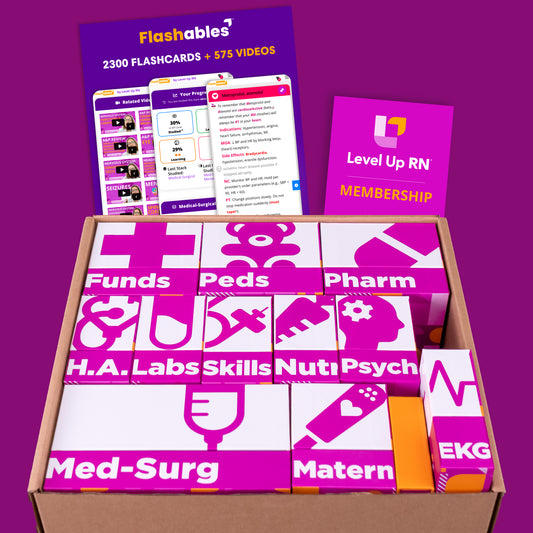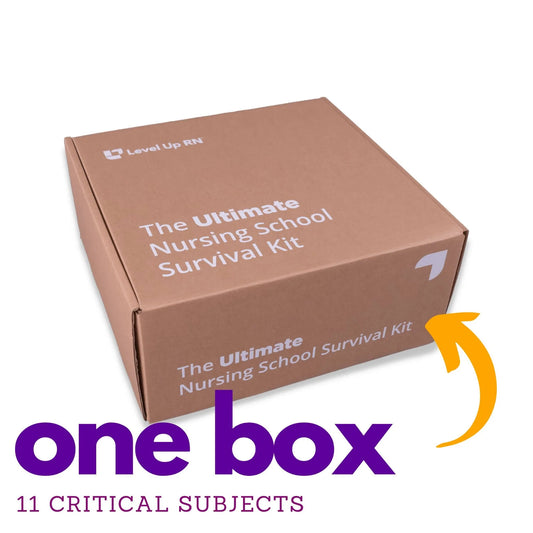Nursing Tips (652)

Tricuspid Valve
The Tricuspid valve separates the right atrium from the right ventricle of the heart.
Tricuspid Valve
The Tricuspid valve separates the right atrium from the right ventricle of the heart.

Assessing Patient Comprehension
The best way to assess patient comprehension of education is to have them "teach back" to the nurse or perform a "return demonstration" to ensure full understanding.
Assessing Patient Comprehension
The best way to assess patient comprehension of education is to have them "teach back" to the nurse or perform a "return demonstration" to ensure full understanding.

Therapeutic Index (TI)
The Therapeutic Index (TI) is a comparison of the minimum amount at which a drug is effective and the level at which a drug becomes toxic. Medications with a HIGH...
Therapeutic Index (TI)
The Therapeutic Index (TI) is a comparison of the minimum amount at which a drug is effective and the level at which a drug becomes toxic. Medications with a HIGH...
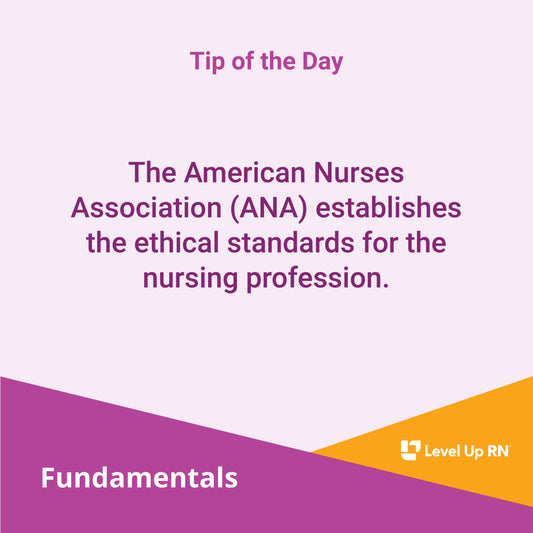
American Nurses Association (ANA)
The American Nurses Association (ANA) establishes the ethical standards for the nursing profession.
American Nurses Association (ANA)
The American Nurses Association (ANA) establishes the ethical standards for the nursing profession.
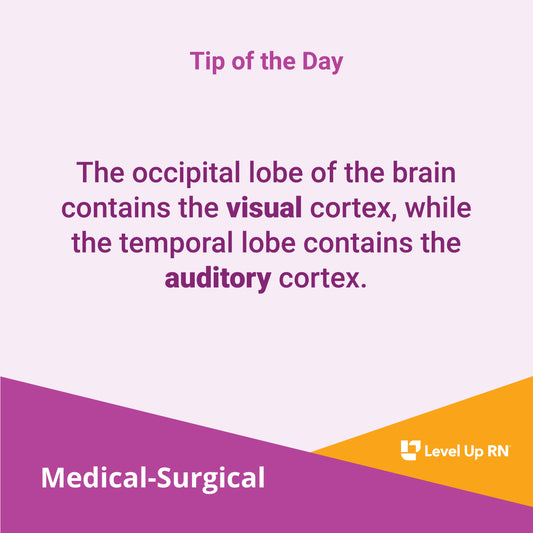
Occipital Lobe versus Temporal Lobe
The occipital lobe of the brain contains the visual cortex, while the temporal lobe contains the auditory cortex.
Occipital Lobe versus Temporal Lobe
The occipital lobe of the brain contains the visual cortex, while the temporal lobe contains the auditory cortex.

Conflict Management: Smoothing
Smoothing is a conflict management strategy where one party compliments the other in order to gain agreement, however the conflict is not actually resolved!
Conflict Management: Smoothing
Smoothing is a conflict management strategy where one party compliments the other in order to gain agreement, however the conflict is not actually resolved!

Anterior versus Posterior Fontanel
The infant's anterior fontanel is diamond shaped and larger than the triangular shaped posterior fontanel.
Anterior versus Posterior Fontanel
The infant's anterior fontanel is diamond shaped and larger than the triangular shaped posterior fontanel.

Slander vs Libel
Slander is verbal defamation of character, while libel is defamation of character that is written.
Slander vs Libel
Slander is verbal defamation of character, while libel is defamation of character that is written.

Hypothalamus
The hypothalamus is responsible for the release of the following hormones: Corticotropin Releasing Hormone (CRH), Thyroid Releasing Hormone (TRH), Growth Hormone Releasing Hormone (GHRH), and Gonadotropin Releasing Hormone (GnRH).
Hypothalamus
The hypothalamus is responsible for the release of the following hormones: Corticotropin Releasing Hormone (CRH), Thyroid Releasing Hormone (TRH), Growth Hormone Releasing Hormone (GHRH), and Gonadotropin Releasing Hormone (GnRH).

Fludrocortisone
The mineralocorticoid fludrocortisone is used to treat adrenocortical insufficiency by mimicking the effects of aldosterone.
Fludrocortisone
The mineralocorticoid fludrocortisone is used to treat adrenocortical insufficiency by mimicking the effects of aldosterone.
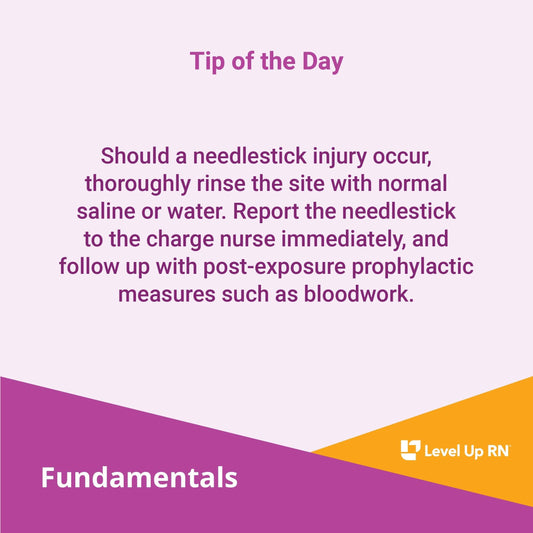
Needlestick Injury
Should a needlestick injury occur, thoroughly rinse the site with normal saline or water. Report the needlestick to the charge nurse immediately, and follow up with post-exposure prophylactic measures such...
Needlestick Injury
Should a needlestick injury occur, thoroughly rinse the site with normal saline or water. Report the needlestick to the charge nurse immediately, and follow up with post-exposure prophylactic measures such...
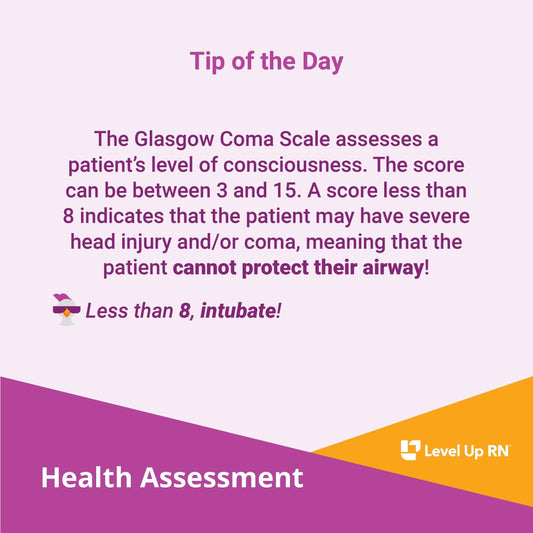
Glasgow Coma Scale
The Glasgow Coma Scale assesses a patient's level of consciousness. The score can be between 3 and 15. A score less than 8 indicates that the patient may have severe...
Glasgow Coma Scale
The Glasgow Coma Scale assesses a patient's level of consciousness. The score can be between 3 and 15. A score less than 8 indicates that the patient may have severe...

Bomb Threat: What to do
Should a bomb threat be made via phone call, keep the caller talking and do not hang up. Write down as much as possible about the call, including the exact...
Bomb Threat: What to do
Should a bomb threat be made via phone call, keep the caller talking and do not hang up. Write down as much as possible about the call, including the exact...
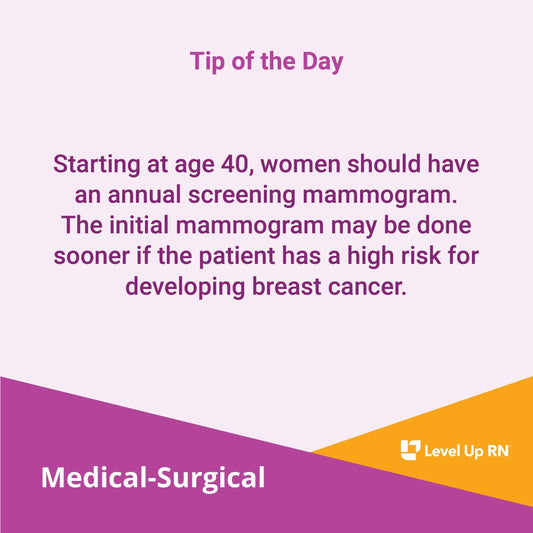
Mammogram Screening
Starting at age 40, women should have an annual screening mammogram. The initial mammogram may be done sooner if the patient has a high risk for developing breast cancer.
Mammogram Screening
Starting at age 40, women should have an annual screening mammogram. The initial mammogram may be done sooner if the patient has a high risk for developing breast cancer.
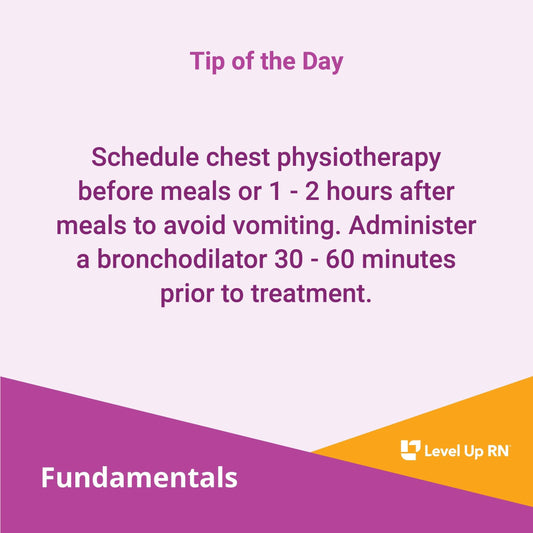
Chest Physiotherapy
Schedule chest physiotherapy before meals or 1 - 2 hours after meals to avoid vomiting. Administer a bronchodilator 30 - 60 minutes prior to treatment.
Chest Physiotherapy
Schedule chest physiotherapy before meals or 1 - 2 hours after meals to avoid vomiting. Administer a bronchodilator 30 - 60 minutes prior to treatment.

The Cerebellum
The cerebellum is responsible for coordinating muscle movements along with maintaining posture and balance.
The Cerebellum
The cerebellum is responsible for coordinating muscle movements along with maintaining posture and balance.

Subcutaneous Injections
Subcutaneous injections may be administered into fatty areas such as the abdomen or the lateral upper arms. Be sure to rotate injection sites!
Subcutaneous Injections
Subcutaneous injections may be administered into fatty areas such as the abdomen or the lateral upper arms. Be sure to rotate injection sites!
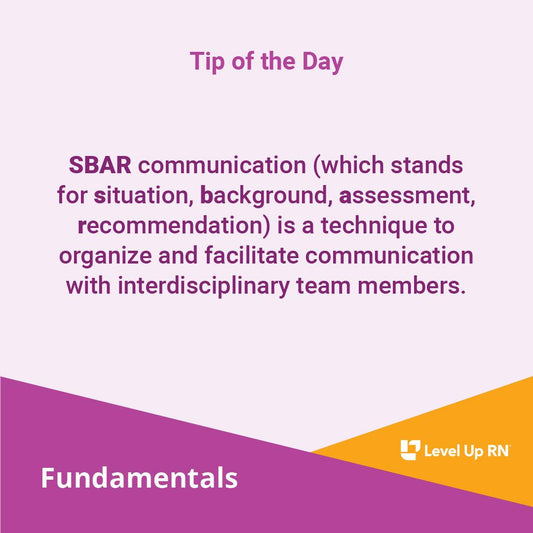
SBAR Communication
SBAR communication (which stands for situation, background, assessment, recommendation) is a technique to organize and facilitate communication with interdisciplinary team members.
SBAR Communication
SBAR communication (which stands for situation, background, assessment, recommendation) is a technique to organize and facilitate communication with interdisciplinary team members.
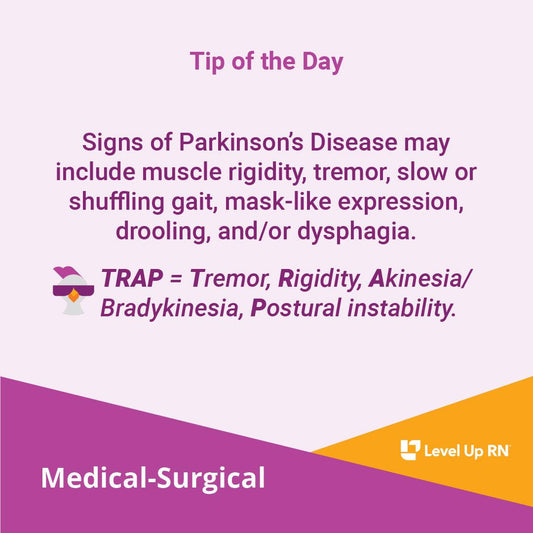
Signs of Parkinson's Disease
Signs of Parkinson's Disease may include muscle rigidity, tremor, slow or shuffling gait, mask-like expression, drooling, and/or dysphagia.
Signs of Parkinson's Disease
Signs of Parkinson's Disease may include muscle rigidity, tremor, slow or shuffling gait, mask-like expression, drooling, and/or dysphagia.
Simethicone
Simethicone is used to relieve painful gas in the GI tract.
Simethicone
Simethicone is used to relieve painful gas in the GI tract.
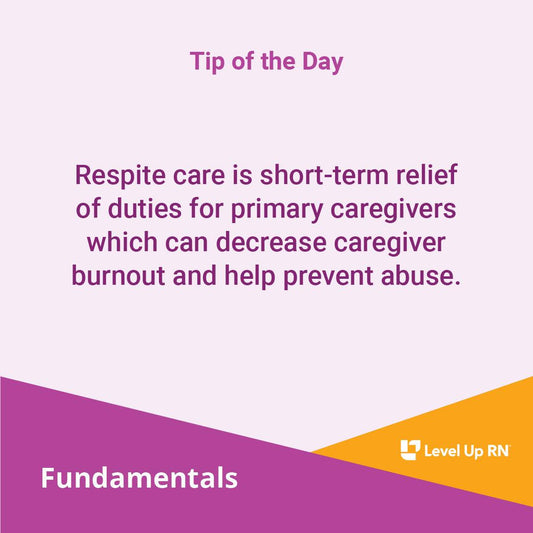
Respite Care
Respite care is short-term relief of duties for primary caregivers which can decrease caregiver burnout and help prevent abuse.
Respite Care
Respite care is short-term relief of duties for primary caregivers which can decrease caregiver burnout and help prevent abuse.
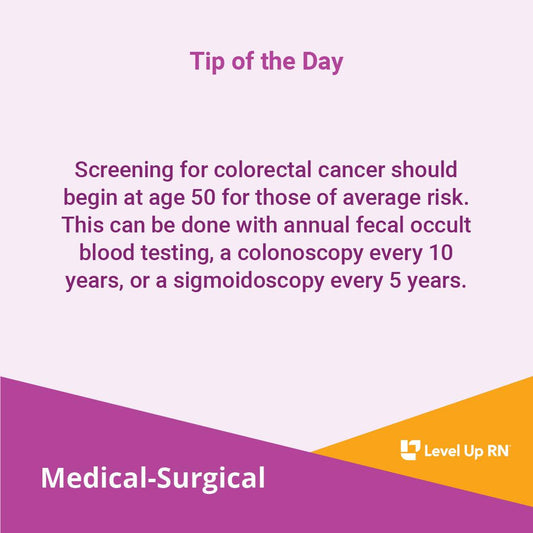
Screening for Colorectal Cancer
Screening for colorectal cancer should begin at age 50 for those of average risk.
Screening for Colorectal Cancer
Screening for colorectal cancer should begin at age 50 for those of average risk.
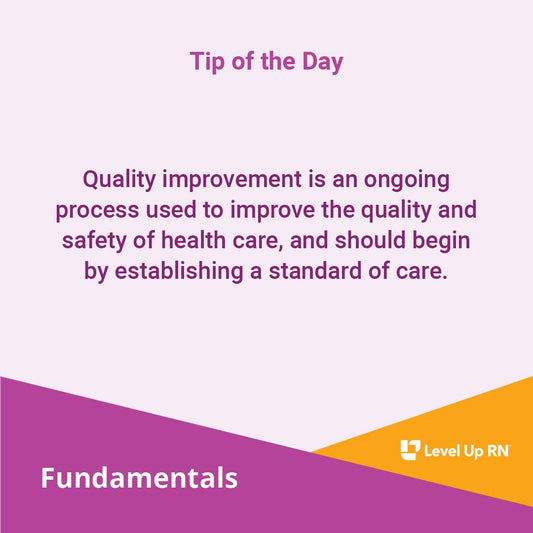
Quality Improvement
Quality improvement is an ongoing process used to improve the quality and safety of health care, and should begin by establishing a standard of care.
Quality Improvement
Quality improvement is an ongoing process used to improve the quality and safety of health care, and should begin by establishing a standard of care.
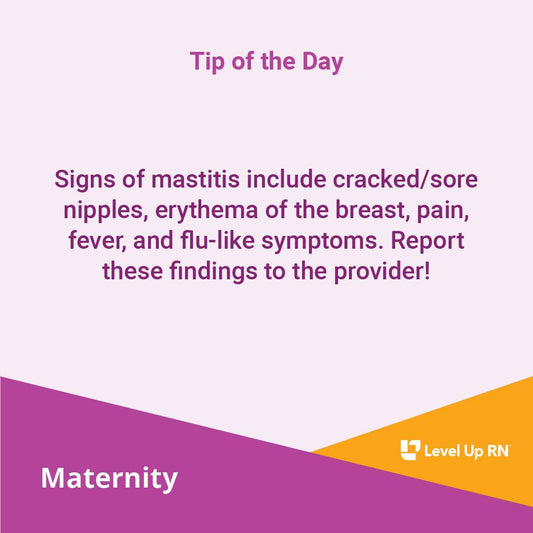
Mastitis: Signs & Symptoms
Signs of mastitis include cracked/sore nipples, erythema of the breast, pain, fever, and flu-like symptoms. Report these findings to the provider!
Mastitis: Signs & Symptoms
Signs of mastitis include cracked/sore nipples, erythema of the breast, pain, fever, and flu-like symptoms. Report these findings to the provider!

Pregabalin
Pregabalin, an anticonvulsant, can also be given to treat neuropathy. CC: Pregabalin prevents Gabby's neuropathy pain.
Pregabalin
Pregabalin, an anticonvulsant, can also be given to treat neuropathy. CC: Pregabalin prevents Gabby's neuropathy pain.

Raynaud's phenomenon
Raynaud's phenomenon is caused by vasospasms in the arterioles and arteries. Upon exposure to cold/stress, fingers become cyanotic, cold, numb, and painful. After spasm the tissue will become reddened as...
Raynaud's phenomenon
Raynaud's phenomenon is caused by vasospasms in the arterioles and arteries. Upon exposure to cold/stress, fingers become cyanotic, cold, numb, and painful. After spasm the tissue will become reddened as...
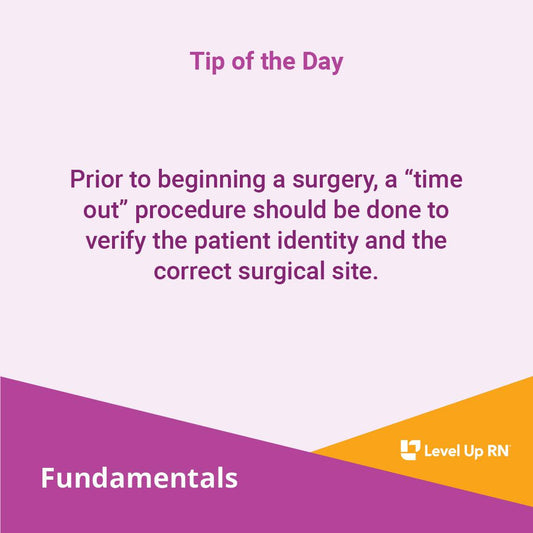
"Time Out" Procedure
Prior to beginning a surgery, a "time out" procedure should be done to verify the patient identity and the correct surgical site.
"Time Out" Procedure
Prior to beginning a surgery, a "time out" procedure should be done to verify the patient identity and the correct surgical site.

Permethrin
Permethrin is a topical medication used to treat pediculosis (lice) and scabies.
Permethrin
Permethrin is a topical medication used to treat pediculosis (lice) and scabies.

Presbyopia
Presbyopia is a common finding in the older adult, and indicates difficulty focusing on close-up objects.
Presbyopia
Presbyopia is a common finding in the older adult, and indicates difficulty focusing on close-up objects.
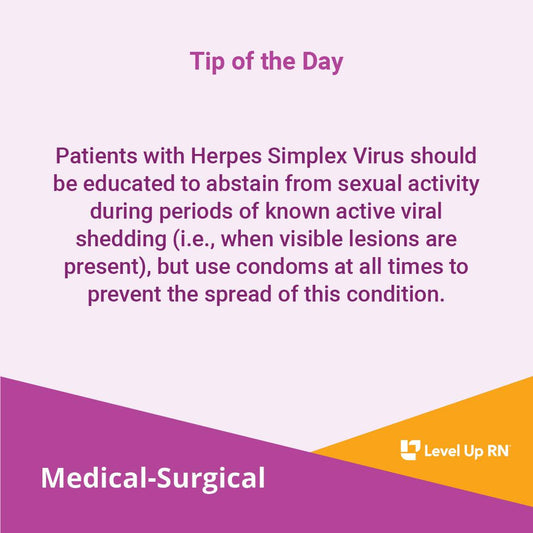
Herpes Simplex Virus
Patients with Herpes Simplex Virus should be educated to abstain from sexual activity during periods of known active viral shedding (i.e., when visible lesions are present), but use condoms at...
Herpes Simplex Virus
Patients with Herpes Simplex Virus should be educated to abstain from sexual activity during periods of known active viral shedding (i.e., when visible lesions are present), but use condoms at...

Nitroprusside
Nitroprusside is a potent vasodilator used to treat hypertensive crisis, but it could cause profound hypotension. In this case, elevate the patient's legs, decrease the dose, and increase fluids per...
Nitroprusside
Nitroprusside is a potent vasodilator used to treat hypertensive crisis, but it could cause profound hypotension. In this case, elevate the patient's legs, decrease the dose, and increase fluids per...

Hemolysis
If an Rh-negative person receives Rh-positive blood, it will cause hemolysis—destruction of RBCs (red blood cells)!
Hemolysis
If an Rh-negative person receives Rh-positive blood, it will cause hemolysis—destruction of RBCs (red blood cells)!

Maternal Phenylketonuria
Maternal Phenylketonuria (PKU) is a genetic disease that causes the amino acid phenylalanine to build up in the body, which can cause birth defects in the developing fetus.
Maternal Phenylketonuria
Maternal Phenylketonuria (PKU) is a genetic disease that causes the amino acid phenylalanine to build up in the body, which can cause birth defects in the developing fetus.

Hyperkalemia & Hypokalemia
The MOST important side effect to know for BOTH hyperkalemia and hypokalemia is DYSRHYTHMIAS.
Hyperkalemia & Hypokalemia
The MOST important side effect to know for BOTH hyperkalemia and hypokalemia is DYSRHYTHMIAS.

What blood type can receive what blood type?
Know what types each blood type can receive: Type O: Can receive O Type A: Can receive A and O Type B: Can receive B and O Type AB: Can receive A, B,...
What blood type can receive what blood type?
Know what types each blood type can receive: Type O: Can receive O Type A: Can receive A and O Type B: Can receive B and O Type AB: Can receive A, B,...
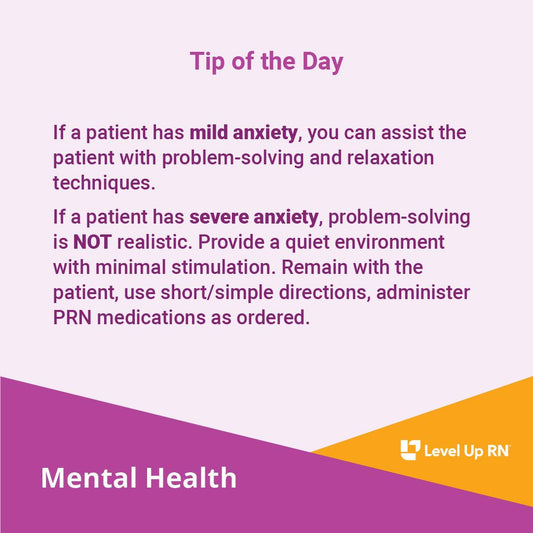
Mild and Severe Anxiety
For mild anxiety, you can assist the patient with problem-solving and relaxation techniques. For severe anxiety, problem-solving is NOT realistic.
Mild and Severe Anxiety
For mild anxiety, you can assist the patient with problem-solving and relaxation techniques. For severe anxiety, problem-solving is NOT realistic.

Glomerulonephritis Labs
Key labs with Glomerulonephritis: Serum: Positive antistreptolysin-O titer. Urinanalysis: hematuria, proteinuria. Throat culture: Positive for group A beta-hemolytic streptococcus
Glomerulonephritis Labs
Key labs with Glomerulonephritis: Serum: Positive antistreptolysin-O titer. Urinanalysis: hematuria, proteinuria. Throat culture: Positive for group A beta-hemolytic streptococcus
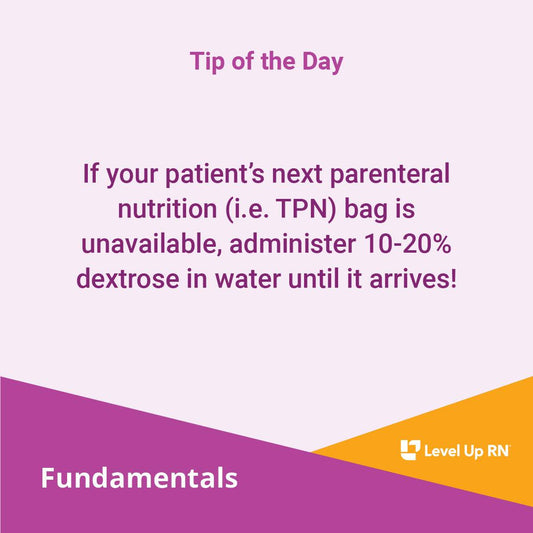
Unavailable Parenteral Nutrition
If your patient's next parenteral nutrition (i.e. TPN) line is unavailable, administer 10-20% dextrose in water until it arrives!
Unavailable Parenteral Nutrition
If your patient's next parenteral nutrition (i.e. TPN) line is unavailable, administer 10-20% dextrose in water until it arrives!

Patients in a crisis
When assisting a patient with a crisis, be sure to ask him/her about past ways of coping.
Patients in a crisis
When assisting a patient with a crisis, be sure to ask him/her about past ways of coping.

Histamine 2 Receptor Antagonists and DINE-ing
Histamine 2 receptor antagonists (ex: ranitidine and famotidine) are used to treat ulcers and GERD. These meds will help you feel better when you "dine".
Histamine 2 Receptor Antagonists and DINE-ing
Histamine 2 receptor antagonists (ex: ranitidine and famotidine) are used to treat ulcers and GERD. These meds will help you feel better when you "dine".

Prefix: Lingu-
The root "lingu/o" means "tongue," as in the "sublingual" (under the tongue).
Prefix: Lingu-
The root "lingu/o" means "tongue," as in the "sublingual" (under the tongue).

Colchicine
Colchicine is a medication used to treat an acute gout attack.
Colchicine
Colchicine is a medication used to treat an acute gout attack.
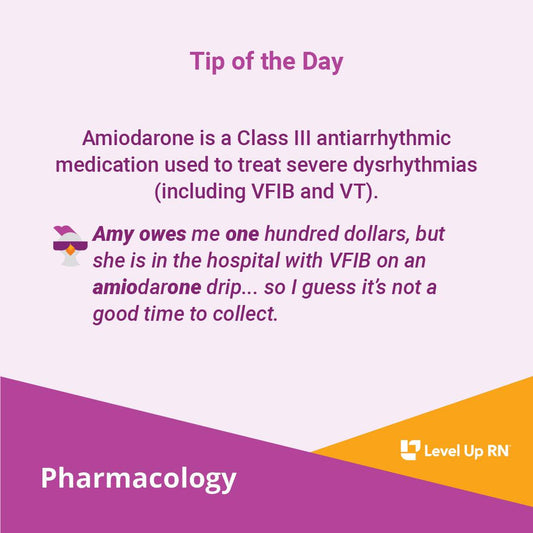
Amiodarone Drip
Amy owes me one hundred dollars, but she is in the hospital with VFIB on an amiodarone drip... so I guess it's not a good time to collect.
Amiodarone Drip
Amy owes me one hundred dollars, but she is in the hospital with VFIB on an amiodarone drip... so I guess it's not a good time to collect.

Urinary Tract Infection
With a Urinary Tract Infection (UTI), the urinanalysis may be positive for leukocyte esterase and nitrites.
Urinary Tract Infection
With a Urinary Tract Infection (UTI), the urinanalysis may be positive for leukocyte esterase and nitrites.

Prefix: Ab-
The prefix "Ab-" means "to take away from," such as abducting the arm (moving it away from midline).
Prefix: Ab-
The prefix "Ab-" means "to take away from," such as abducting the arm (moving it away from midline).
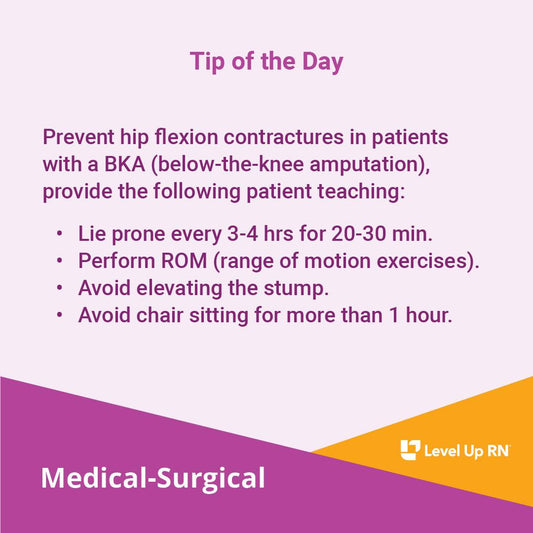
Hip Flexion Contractures
Prevent hip flexion contractures in patients with a BKA (below-the-knee amputation): Have patient lie prone every 3-4 hrs for 20-30 min.
Hip Flexion Contractures
Prevent hip flexion contractures in patients with a BKA (below-the-knee amputation): Have patient lie prone every 3-4 hrs for 20-30 min.
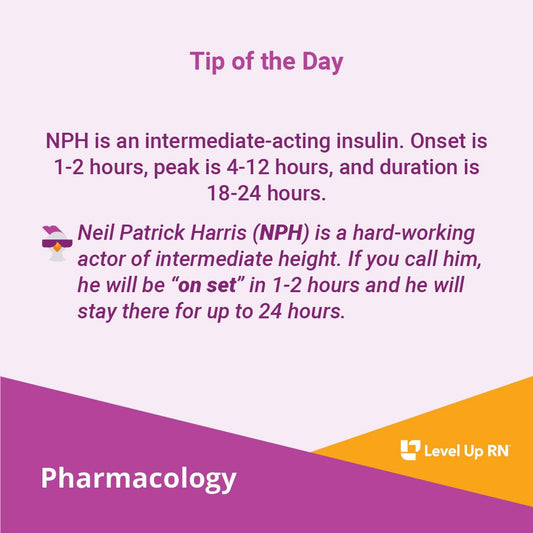
NPH- Intermediate-Acting Insulin
NPH is an intermediate-acting insulin. Onset is 1-2 hours, peak is 4-12 hours, and duration is 18-24 hours. HINT: Neil Patrick Harris (NPH) is a hard-working actor of intermediate height....
NPH- Intermediate-Acting Insulin
NPH is an intermediate-acting insulin. Onset is 1-2 hours, peak is 4-12 hours, and duration is 18-24 hours. HINT: Neil Patrick Harris (NPH) is a hard-working actor of intermediate height....
Filter Articles
Shop
The Ultimate Nursing School Survival Kit - with Flashables and Membership
4.875 / 5.0
(240) 240 total reviews
Regular price $349.95Regular priceUnit price / per$817.95Sale price $349.95SaleVideos by Subject
Tips & More
Exam Information
Subscribe


